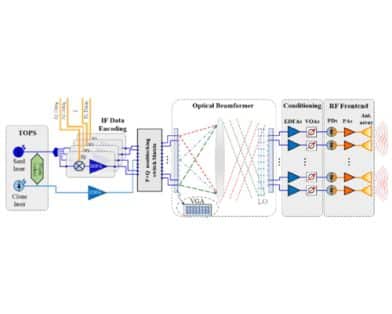
by Shouyuan Shi
Volume: 73, Issue: 10, October 2025
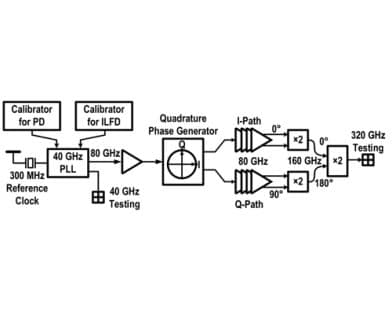
by Yuan Liang
Volume: 73, Issue: 10, October 2025
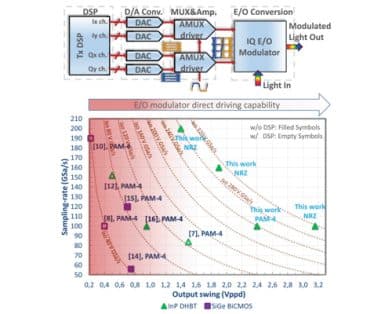
by Romain Hersent
Volume: 73, Issue: 10, October 2025
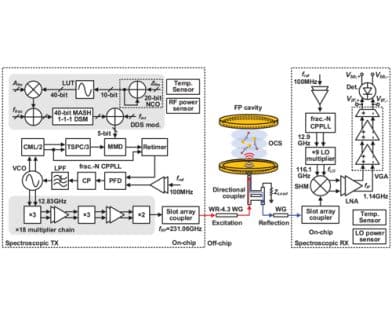
by Fang Shen
Volume: 73, Issue: 10, October 2025
The IEEE Transactions on Microwave Theory and Techniques (T-MTT) is the preeminent publication concerning RF and microwave technology. It focuses on that part of engineering and theory associated with microwave/millimeter-wave components, devices, circuits, and systems involving the generation, modulation, demodulation, control, transmission, and detection of microwave signals. This includes scientific, technical, and industrial activities. Microwave theory and techniques relates to electromagnetic waves usually in the frequency region between a few MHz and a THz; other spectral regions and wave types are included within the scope of the Society whenever basic microwave theory and techniques can yield useful results. Generally, this occurs in the theory of wave propagation in structures with dimensions comparable to a wavelength, and in the related techniques for analysis and design.
The Impact Factor of T-MTT is 4.5 in 2024 and the acceptance rate is 26.1%. The average time from submission to first decision is 24.3 days and the average time from submission to final decision is 34.5 days.
Electronic Access is Available to digital subscribers through IEEE Xplore.
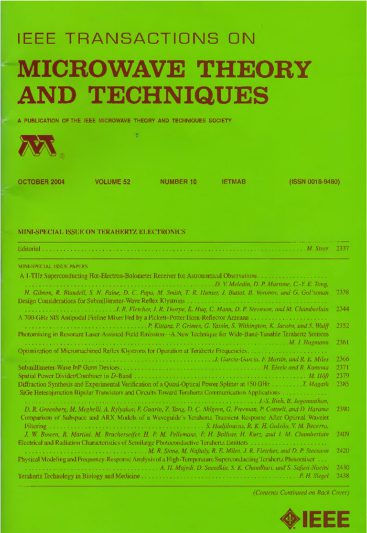
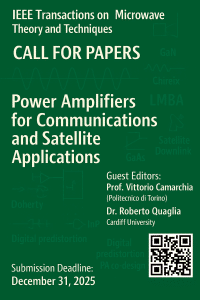 The design and implementation of power amplifiers (PAs) remain a cornerstone of RF and microwave transmitters, enabling energy efficient transmission of signals across wireless and satellite communication systems. The demand for high-performance, energy-efficient, and broadband PAs continues to grow with the evolution of 5G/6G cellular networks, satellite constellations, non-terrestrial networks, and emerging frequency bands up to millimeter-wave.
The design and implementation of power amplifiers (PAs) remain a cornerstone of RF and microwave transmitters, enabling energy efficient transmission of signals across wireless and satellite communication systems. The demand for high-performance, energy-efficient, and broadband PAs continues to grow with the evolution of 5G/6G cellular networks, satellite constellations, non-terrestrial networks, and emerging frequency bands up to millimeter-wave.
In 2026, the RF/microwave community will celebrate the 90th anniversary of the Doherty Power Amplifier and the 10th anniversary of the Load Modulated Balanced Amplifier (LMBA). These milestones mark a crucial moment to assess recent developments and future directions in high-efficiency amplification. This Special Issue aims to feature cutting-edge research on advanced PA architectures, enabling technologies, and system-level innovations for high-efficiency, linear, and broadband power amplification in both terrestrial and spaceborne communication systems.
The submission is accomplished through IEEE Author Portal website (https://ieee.atyponrex.com/submission/), in exactly the same way as any other regular MTT Transactions’ submission. When you prepare your manuscript, you should consult the Instructions for Authors (https://mtt.org/publications/t-mtt/information-for-authors/) and follow the T-MTT Word or LaTex Templates available there. Papers not following these templates cannot be accepted into the peer review process.
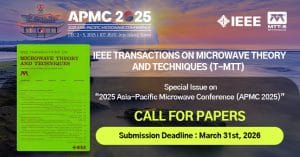
The IEEE Transactions on Microwave Theory and Techniques (IEEE T-MTT) will publish a Special Issue devoted to the 2025 Asia-Pacific Microwave Conference (APMC 2025). Authors of all papers relevant to topics of interest of T-MTT presented at the APMC 2025 are invited to submit an expanded version of their papers to the Special Issue. The expanded version requires that the new technical content includes a more in-depth treatment, new results beyond the APMC 2025 paper, or both. The authors should also take advantage of the reviewers’ recommendations/criticisms as well as the discussions generated at the APMC 2025, which may lead to possibly different results or interpretations. Every paper will be reviewed by the TMTT Editorial Board in the same manner as all other regular submissions to this publication.
The submission is accomplished through IEEE Author Portal website (https://ieee.atyponrex.com/submission/), in exactly the same way as any other regular MTT Transactions’ submission. When you prepare your manuscript, you should consult the Instructions for Authors (https://mtt.org/publications/t-mtt/information-for-authors/) and follow the T-MTT Word or LaTex Templates available there. Papers not following these templates cannot be accepted into the peer review process.
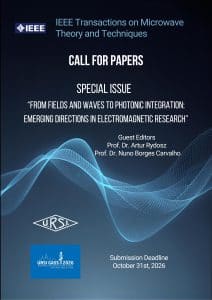
The special issue From Fields and Waves to Photonic Integration: Emerging Directions in Electromagnetic Research aims to present a unified vision of contemporary advancements in electromagnetics—from fundamental studies of fields and waves to state-of-the-art modeling and characterization techniques, and to innovative solutions in communication, sensing, and integrated photonics. By bringing together the perspectives of URSI Commissions A, B, C, and D, this issue highlights the convergence of classical and emerging approaches that collectively shape the future of science- and industry-driven technologies. Its goal is to inspire cross-disciplinary dialogue, showcase recent breakthroughs, and outline promising directions for further research in electromagnetics and photonics.
Scope: We invite original research contributions and high-quality review articles covering, but not limited to, the following topics. The submission should clearly articulate its relevance to the appropriate URSI Commissions and should reference related presentations delivered at URSI GAAS 2026
The submission is accomplished through IEEE Author Portal website (https://ieee.atyponrex.com/submission/), in exactly the same way as any other regular MTT Transactions’ submission. When you prepare your manuscript, you should consult the Instructions for Authors (https://mtt.org/publications/t-mtt/information-for-authors/) and follow the T-MTT Word or LaTex Templates available there. Papers not following these templates cannot be accepted into the peer review process.